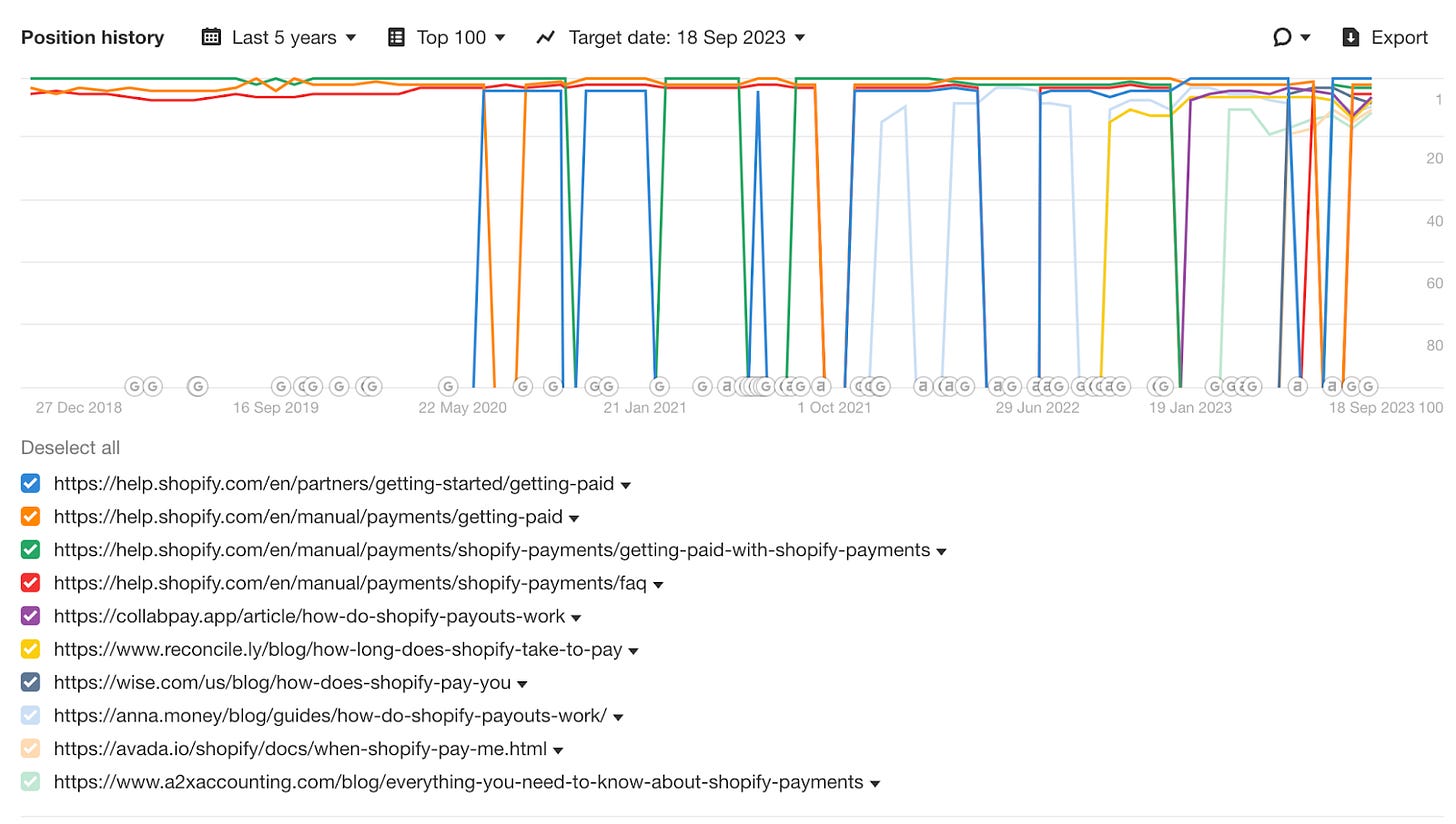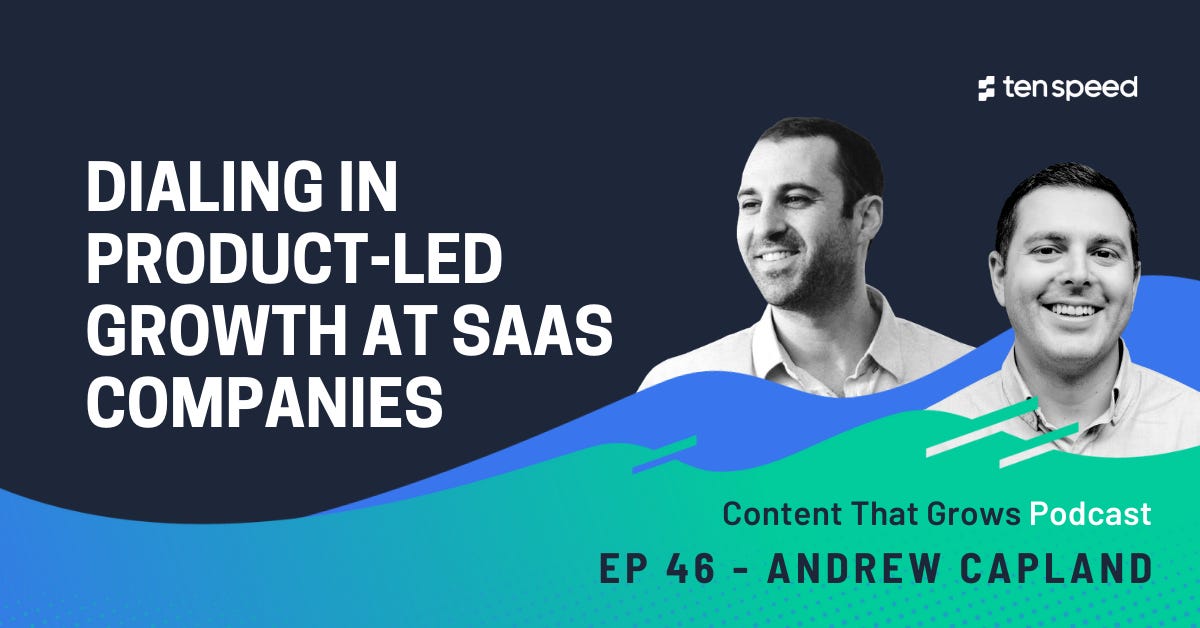3 BoFu SEO Strategies You’re Missing Out On
Explore bottom-of-the-funnel opportunities most SaaS companies overlook
Hello all, and welcome back to this month’s edition of Optimized!
In this issue, we’re tackling another popular topic that most content marketers and SEOs have been forced to address, given that executives are asking us to tighten our belts and focus on what drives growth.
For better or worse, this often translates to “Get us some short-term results, marketer!”
Your first impulse is likely to gaze at the content on your site that represents and supports the bottom of the funnel.
Here’s what most BoFu SEO and content topics will be composed of:
Vs. (1v1 or 1v1v1 comparisons) pages
Competitor alternative listicles
Competitor reviews
Best software for… listicles
How-to articles that incorporate your product features and your ICP’s JTBD
We’ve even talked about one of those BoFu frameworks we use in this newsletter if you’d like to see how we build the initial scaffolding and explore examples for yourself.
From here, you can sprinkle in a few lead magnets, reports, podcast clips, product marketing assets, or a newsletter sign-up, and you should start to see freemium activations increase.
This tried-and-true approach can be extraordinarily effective depending on how your customers buy and seek education about your product. No doubt about it.
But at some point in your content marketing endeavor, you’re going to ask yourself one or both of these questions:
Are there other BoFu strategies to run after I complete the minimally viable and more obvious content topics?
Why isn’t the above strategy working, and are there other SEO strategies that can help support the bottom of our funnel?
To answer these questions, here are 3 bottom-funnel content strategies beyond the traditional content topics that allow you to leverage SEO for greater organic reach.
1. Location-based pages
I know. You’re not a local company with a brick-and-mortar storefront. That doesn’t mean you can’t leverage the way people search to help drive more organic pipeline.
Yep, even our national and international software clients have leveraged location-based topics and web pages to increase their product awareness and ultimately close referral deals.
For example, take a look at the Google Search Console screenshot below 👇
For this particular company, we knew one thing about their customers that gave us the confidence to test city-based pages.
Their ICP is regularly searching for and managing venture capital, and plenty of them search in city centers near them to find local firms they can create an easier connection with.
That meant we could create a resource for our client’s customers to find local VC firms while introducing them to a software product that helps them manage those funds.
So, we began creating listicle pages that functioned as data samples of location-based companies that people should work with when pursuing VC funding in their area.
The bonus marketing win in this was that our client reached out to each local VC firm they wanted to include on these lists. This fostered additional relationships with well-positioned people to recommend our client's software to their partners.
2. Help-desk queries for other brands’ tools
Some of you work for software companies that ultimately sell to customers who can only use your tool inside of another larger software company’s tool.
Think of all the specialty eCommerce software that makes it easier to do something in Shopify. Then, they slowly branch out to support WooCommerce, BigCommerce, and maybe Adobe Commerce (Ex-Magento).
You can still leverage the traditional approach by creating educational content related to your product features.
You might find, however, that a lot more people are specifically searching how to make certain tools integrate with Shopify, which tools integrate with Shopify to do a specific task, and how to address a JTBD for your ICP with another one of Shopify’s partner integrations related to your tool.
Pro-tip: You’ll likely search for keywords that fit these descriptions, and then notice that Shopify’s help desk pages take up the first 4 spots (like in the example below). That’s normal.
Are these pages/topics still worth creating if the best you can do is rank 5th and behind what should be 4 articles from a more prominent, much more trusted brand about their product?
Yep. They are worth creating.
It turns out that many company help desk articles are overly simple - addressing what they hope are the most straightforward steps that’ll satisfy customers’ needs.
However, many of us, at one point, have ventured below positions 1-4 to get away from the main brand’s solutions, knowing full well they weren’t answering our question(s).
That’s where your article that offers several ways to do a specific task (including one that promotes using your tool) comes in to give searchers an overall better experience.
3. Content-supporting topics vs. product-supporting topics
Many of us get so sucked into where we can use product demos, UI screenshots, and our main selling CTAs that we forget to focus on what ultimately moves prospective customers.
Sometimes, it’s the discovery of your team or your brand via a specific content topic or type.
For example, we’ve had clients whose webinars are the biggest driver of high-intent leads. The kicker is that the webinars are often about a particular topic of pain or resonance for people and not about their product.
If you have over-performing content because of the topic relevance, find keywords that allow you to rank and feed organic traffic in front of that asset (internal links or direct embeds).
Go beyond traditional, obvious BoFu topics
We’re always discovering new ways to think about how we provide content experiences and choose topics that will mean the most to our client’s prospects.
And a lot of our learnings come from first-hand experiences. For example, at Ten Speed, one of our content pieces that generated multiple leads this past year was a video by our CEO, Nate Turner, giving technical SEO tips on using Webflow.
With that, we can start to think about how CMS-specific hurdles make for great content topics that do, in fact, represent the middle and bottom of our funnel.
And we invite you to share your non-traditional BoFu strategies in the comment section below or directly with any of us on LinkedIn.
See you next month!
New podcast episode is live today! (click here to watch or listen):







